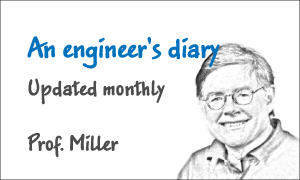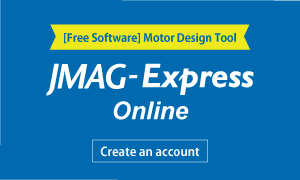Overview

Electrical steel sheets are usually used as motor core material. Recently, there are movements to apply amorphous alloys and nanocrystalline alloys which have significantly lower iron loss to motor cores. However, those materials are much more expensive than electrical steel sheets typically. In product design, not only a motor efficiency requirement but also a cost requirement must be met. To tackle such trade-off problems and find optimal material candidates, the material optimization where material is taken as design variable is one of the most promising ways.
A case study to optimize the dimensions of the IPM motor geometry and its core material among three types (electrical steel sheet, amorphous alloy and nanocrystalline alloy) simultaneously for minimizing both the iron loss and the material cost is introduced.
Optimization Conditions
The design variables are outlined in Table 1, the objective functions in Table 2, the constraint conditions in Table 3 and the dimensional parameters in Fig. 1.




Optimization Results
Fig. 2 illustrates the distribution of the objective functions for feasible solutions obtained by the optimization. Fig. 3 is the enlarged view up to 300 W of iron loss.
Fig. 4 and Table 4 shows geometries and objective function values of the initial design and two optimal designs A and B chosen from Pareto solutions whose rotor core material is the electrical steel sheet and stator core material is the nanocrystalline alloy.
As seen in Fig. 2 and Fig 3, feasible solutions are distributed in several enclaves for each material combination. Using the electrical steel sheet for both the rotor and stator cores is the least expensive as expected. On the other hand, the nanocrystalline alloy for both cores gives the smallest iron loss. Combinations of different materials are distributed in the middle. It is notable that the combination of the electrical steel sheet for the rotor and the nanocrystalline alloy for the stator gives much lower iron loss than the opposite combination, but their material costs are comparable. The reason is that the stator iron loss is dominant and therefore using low iron loss materials for the stator is more efficient.
As illustrated by Fig. 4, the rotor size gets larger as we pick up a less expensive solution that locates in the enclave of the combination of the electrical steel sheet for the rotor and the nanocrystalline alloy for the stator. The explanation is that the nanocrystalline alloy is more expensive and downsizing the stator where it is used reduces the cost much more.
The optimal designs A and B reduce iron loss to 1/17 to 1/30 of the initial design as can be seen in Table 4. Meanwhile, the material cost of those designs is only 2.5 to 3.8 times higher though it is assumed that the nanocrystalline alloy is much more expensive than the electrical steel sheet in this case study.






